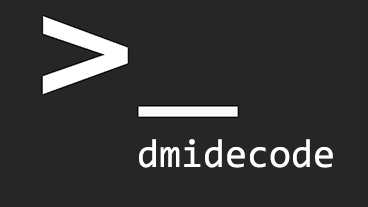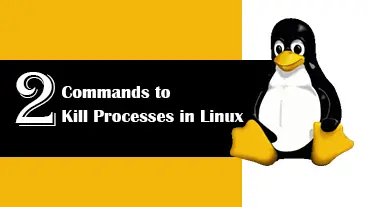Linux Tutorials
 Dmidecode - Command to Get Hardware Info in Linux
Dmidecode - Command to Get Hardware Info in Linux
 How to List only Directories in Linux ls Command?
How to List only Directories in Linux ls Command?
 How to Install SSH Server on Linux
How to Install SSH Server on Linux
 How to Lock User Account in Linux with passwd command
How to Lock User Account in Linux with passwd command
 Two Commands to Kill Processes in Linux Operating System
Two Commands to Kill Processes in Linux Operating System
 Navigate like a Pro: 6 Must-Know Editing Shortcuts for Linux Bash Shell
Navigate like a Pro: 6 Must-Know Editing Shortcuts for Linux Bash Shell
 How to Install, Update, and Uninstall Apps on Linux Using Flatpak
How to Install, Update, and Uninstall Apps on Linux Using Flatpak
 Linux Remove Symbolic Link (Symlink)
Linux Remove Symbolic Link (Symlink)
 Linux wget Command Examples, Tips and Tricks
Linux wget Command Examples, Tips and Tricks
 DNF Command: Install, Update, Remove Packages in CentOS, Fedora, Red Hat
DNF Command: Install, Update, Remove Packages in CentOS, Fedora, Red Hat
 Cal Command: How to Display Calendar in Linux Terminal
Cal Command: How to Display Calendar in Linux Terminal
 How to Get CPU Information with lscpu Command in Linux
How to Get CPU Information with lscpu Command in Linux
SCP Command: Securely Copy Files on Linux, Windows, and macOS
Master the Linux scp command for secure file transfer! This comprehensive tutorial demonstrates how to copy files and folders between local and remote Linux and Windows machines.
Why You Should Configure a Passive Port Range in VSFTPD
Learn why configuring a passive port range in your vsftpd server is crucial for reliable FTP connections, especially for clients behind firewalls.
Pwgen Command: Random Password Generator for Linux
In this tutorial, we’ll look at the 'pwgen' command—a simple yet powerful tool for generating strong, random passwords in Linux.
How to Generate Strong, Unique Passwords on Linux
In this tutorial, you'll learn how to easily create strong, unique passwords using the Linux command line.
How to Fix 'client_loop: send disconnect: Broken pipe' in SSH
Learn how to fix SSH 'client_loop: send disconnect: Broken pipe' and 'connection reset' issues on both the server side and client side.
How To Check Open Ports in Linux
As a system administrator, you should know how to check open ports on a Linux Server.
Command to Get Motherboard Model in Linux
Learn how to use the dmidecode command to check the motherboard model in Linux operating system.
Find Case Insensitive Search with Linux Find Command
Search for files and folders using the Linux find command with the case insensitive option.
How to Check Apache Web Server Version in Linux
There are one or two commands to check the apache web server version in Linux, depending on the Linux distribution you use.
Creating Bash Alias with Linux alias command
How to Get PID of a Process in Linux Terminal
To manage processes you need to know the PID of the process you want to manage. For example, let's say you want to terminate a process that is unresponsive. We can terminate a process using the kill command, but we need to know the process ID.
Environment Variables That Control Linux Command History
There are a couple of important shell variables that control Linux Command History (HISTFILE, HISTFILESIZE and HISTSIZE).
Yum priorities: Installing Yum Priorities and Prioritizing repositories on CentOS 7
Yum Priorities are important If you have added additional third-party repositories, for example epel and remi. There can be a conflict when a version of a package is available from multiple repositories and you may end up installing the package from the least trusted source.
How to install the latest version of EPEL Repo on CentOS 7
We can install a wide variety of softwares and packages from the CentOs main repository. But some important packages (such as PHP 7, phpMyAdmin, HTOP and many more) are not available in the CentOS base repository.
Using apachectl to Control Apache Web Server in Linux
In this tutorial we will learn how to use apachectl command to manage Apache HTTP Server on Linux. The apachectl commands include with the Apache installation in all major Linux distributions, including Debian, Ubuntu, CentOS 7, Red Hat and Fedora. With it, you can start, stop, and restart the HTTP daemon on your web server.
How to Check OS version in Linux with lsb_release command
There are various reasons why you might want to find which Linux distribution you are using or the OS version of your Linux system. To know the version of Linux installed on your computer, there are many options. One of the options is the lsb_release command.
Real-Time Linux network traffic monitoring with Iftop
Iftop, one of the most popular command line tool for monitoring network traffic in Linux. Iftop command can quickly show you which source using most bandwidth by listing its IP address or hostname at the top of the output.
Install phpMyAdmin on CentOS 7 for PHP 7
In this tutorial we will learn how to install phpMyAdmin on CentOS 7 for PHP 7.
Epel repository provides a phpMyAdmin package for PHP 5, But it is not compatible with PHP 7. For PHP 7, we need to manually download and setup phpMyAdmin web interface.
How to Install LAMP Stack on CentOS 7
We are going to need a web server, a database, and PHP in order to serve dynamic PHP websites. LAMP is a term describing web server that includes all of these software packages.
CentOS 7 LAMP stack includes, following components.
How to Concatenate Files in Linux with cat command
In Linux cat command used to concatenate one or more files together. By default cat command reads the file and print output to the terminal.
How to Catch Standard Error to a Variable in Bash
To store stderr into a variable we need to use command substitution.
But, by default, command substitution only catches the standard output(stdout). To capture stderr we need to use 2>&1 redirector.
Learn Linux Bash Output Redirection and Command Pipes
In this tutorial we are going to learn How to use Output redirection and Pipes in Linux Bash environment.
In Linux bash there is Two types of Outputs, stdout (Standard Output) and stderr (Standard Error).
How to Show Currently logged in users in Linux
How to check how many users are logged in to the Linux system? There are few commands we can use to show currently logged in users in Linux Operating System.
Curl Command: A Practical Guide to Curl in Linux with Examples
Learn how to use curl to view web pages, download files, display response headers, and download and upload files to an FTP server.
Download Wordpress Latest Version with wget command
Download the latest version of the WordPress installation package using the wget command and curl command.
Change Runlevel in Linux with systemctl Command
Most Linux distributions use systemd as their init system. In systemd, we use the systemctl command to change runlevels. Also, you should know that, in systemd we identify runlevels as “targets”. For Example multi-user mode called as multi-user.target.
dnf Command - Install and Manage Packages in CentOS / Fedora
In this tutorial we are going to learn how to use dnf command to install and manage packages in RPM-based Linux distributions.
The dnf command is the improved version of the yum package manager which is used in Redhat based Linux distributions. Currently Fedora use dnf command as its package manager and we expect the next major release of Redhat and CentOS will use dnf command as the their software installer.
How to Unzip Zip files in Linux using unzip Command
In this tutorial we are going to learn how to unzip zip files in Linux Operating System. The Zip file compression Format mostly used in Microsoft Window and often you will need to unzip zip files that ported from a windows computer.
To unzip zip file in Linux, we need to install unzip package. After we install unzip command, we can extract zip file from the command line or from the GUI, if you are using Linux Desktop.
How to Update Bash In Linux Operating System
In this Linux tutorial we are going to learn how to update bash in Linux Operating System. We will look how to update bash (GNU Bourne Again shell) in both Redhat Based Linux distributions and Debian Based Linux Distributions.
How to Run Cron Job When System Reboot in Linux
In this tutorial we are going to learn how to schedule cron jobs to run everytime after system reboot in Linux. The Linux crontab has a time option called @reboot which allows to run a cron job once after reboot every time.
How to Display Calendar in Linux Terminal
In this article I am going to show you how to print calendar in Linux terminal. In the Linux terminal, we can get the calendar using the cal command. Open the Linux terminal and type cal, and you will get the calendar of the current month.
How to Deny specific user from Running Cron jobs in Linux
In this Linux tutorial we are going to learn how deny specific user from running scheduled task using Linux cron job. Every Linux user can add their own cron jobs using crontab -e command. But what if we want to disable specific user from running cronjobs ?
How to Get My Public IP Address using Linux curl Command
In this tutorial we are going to learn how find Public IP Address of our computer using Linux curl command. Normally, if we want to find the public IP Address we use, we go to google and search “what is my ip address”. But if you use Linux, you can get your public IP Address from the command line using curl command. The curl command with ifconfig.me argument will show your public IP Address.
How to Check Bash Version in Linux Operating System
In this Linux tutorial we are going to learn how to how to check bash version in Linux. To get bash version in Linux, we can use either bash command or $BASH_VERSION environment variable. Easiest way to check bash version is to run bash --version in the command prompt.
How to Create a Directory in Linux Operating System
In This Linux Tutorial we are going to Learn How to make directories using mkdir Linux Command.
In Linux mkdir command use to create directory in Linux. If no path specified new directory will be created inside the current working directory.